Review for Absolute Beginners
If you were around during the lead up to the release of ‘Absolute Beginners’ in the UK, you’d have been forgiven for thinking it was the second coming. Every week, months ahead of its eventual release, we were fed more and more hype about this brilliant, lavish star-studded musical adaptation of a very hip Colin Macinnes' novel about late 1950’s London. It was going to be an all-singing, all-dancing film festooned with familiar faces – a teen movie to beat all teen movies, hip and groovy and directed by Julien Temple who, at that point, was making a name for himself as one of the best of a new breed of ‘pop video’ directors; heady stuff in MTV Europe’s halcyon period.
Of course, what none of us had realised was that, when it eventually hit the screens, that it would be a one note samba – a screeching, repetitious, high energy concoction that was like a gluttonous, lengthened version of a 2-minute pop video. As a result, it was tedious in the extreme, a bitter disappointment that couldn’t possibly live up to the hype – beyond dull after the initial excitement of its opening five minutes or so.
This miss-judged pace was further cheapened by turgid dialogue, a narrative that proved to be a somewhat confusing adaptation of the novel, topped off with some wooden acting by, well, just about everyone involved – which was a veritable who’s who of film and music of the day. It was certainly no one’s finest hour.
That said, this really top notch 2K transfer does allow a modicum of positive re-appraisal. The set scenes, whilst hyper stylised (very much influenced by the Coppola movie, ‘One from the Heart’) and pretty much studio based, are pretty spectacular visually – superbly lit with lavish stage sets and costumes galore as well as some highly innovative camera moves. The music is, on occasion, pretty uplifting, though often let down by the inclusion of some contemporary eighties songs by the likes of Paul Weller which are, in the cold light of day, well below par for a film of this budget.
Bowie’s opening number was great of course – really one of his finest tunes from the period (his least productive creatively) although his acting part in the piece was, by any yardstick, pretty awful. Which is a shame as Bowie was a huge fan of McInnes’s work.
No one can argue about the production value of the film – this has big budget written all over it with an all-star cast, huge sets (like chunks of Soho being rebuilt on a studio along with a vast swathe of post-war London’s East-end) and amazing camera moves that must have taken a lot of time, budget and crewing to achieve. Which only makes the resultant mess somewhat harder to stomach.
Then there was the cast – you name them, they’ll be in here somewhere. Patsy Kensit, David Bowie, Sade, Ray Davies of The Kinks, Ted Tudor Pole, Eddie O’Connell, James Fox, the infamous Mandy Rice Davies, Steven Berkoff, Sade, Alan ‘Fluff’ Freeman, Lionel Blair, Robbie Coltrane, Jess Conrad, Smiley Culture, Ronald Fraser, Slim Gaillard, Irene Handl – the list really does go on.
Then Gil Evans was brought in as musical director. Yes, the self-same Gil Evans who worked with Miles Davis to produce some of Miles Davis’s finest albums of the fifties/sixties jazz scene, including the ground-breaking ‘Sketches of Spain’. Even with that level of musical credence the film failed to ignite.
One saving grace, commercially, was the success of the related album which made the top ten and featured tracks from David Bowie, Sade, Paul Weller, Ray Davies and many more – many seeming to bear no relation to the late fifties whatsoever.
So what about the story? At its simplest, dude about town and young photographer, Colin (Eddie O'Connell) begins to get ready for a night out on the town. We see his flat as an idealised bachelor pad where the oven is used for nothing less than storing beer. He talks to his mirror whilst getting ready for a night on the town and even a picture of his girlfriend, Crepe Suzette (Patsy Kensit) comes to life to tell him what to wear. It’s like Happy Days meets Cinderella and is pure musical theatre.
When Colin steps into Soho the film explodes into life with vivid colours, a tracking camera and a cast of what seem like hundreds cartwheeling and kicking and dancing their way through the first exhausting ten minutes. Think of an overly-long 12” mix of a good single and you’ll get the idea – though this is all eighties music video on steroids.
Whilst Colin is a laid back photographer, Suzette is fiercely ambitious and after a bombastic move at a dull fashion show she’s offered a modelling position with the iconic Henley of Mayfair (headed up by James Fox). His lavish lifestyle appeals to her and before long she becomes ensconced in his world, all but forgetting her beau, until he turns up as the photographer at a celebrity party she’s at.
Determined to win her back, Colin liaises with PR maestro, Vendice Partners (played with maximum ham by David Bowie in one of his less convincing on-screen roles) who persuades him to get involved in a housing project which will see some of the poorer people in his hood get uprooted from their earthy dwellings. Yes - it really is as exciting as it sounds, which is to say, not very.
Perhaps the best part of the disc is the main extra feature – a documentary charting the disastrous path of the film, and making some sense of the resultant disjointed mess it became, with Temple taken off the film at some point and a variety of editors given parts of the film to cut independently just to get the damn thing finished. Temple himself seems pretty sanguine about things today although it was clearly a film that, despite its good points, weighs heavily on all involved. The party line amongst all seems to be that the total critical slating it received on release in the UK, was to do with the pre-release hype which it had no chance of ever living up to. They argue the point that it still did good box office in the UK whereas in the US, where there had been little or no hype, it was received better by critics but did very poorly commercially.
One lesson collectively learned was never to make a film with ‘Absolute’ as its first part of a two word title. Almost every review played it back with a negative descriptor; ‘Absolute Mess’; ‘Absolute Disaster’; ‘Absolutely Awful’ were just a few of the unkind headlines.
Despite all the film’s problems, when viewed as short extracts, parts are terribly impressive and it wouldn’t take a leap of imagination to consider its influence on the works of Baz luhrmann for example. Much of his hyper stylised, semi-theatrical scenes can be seen in embryonic form here.
The image quality is pretty impressive. I recall watching a VHS copy back in the day that made a bad film worse, but this really does show up its positive points. After all, there is much to admire in the film’s visual appearance.
It comes with a DTS-HD Master Audio 5.1 as well as a DTS-HD Master Audio 2.0 mix which are both excellent – the only noticeable difference between the two seeming to be during musical numbers where the 5.1 mix uses a bit more surround differentiation.
It may not be anywhere close to being the best film in the world but it does now possess a modicum of nostalgic charm and there is much to enjoy in its visual look and feel. It does also house a rather good documentary on the making of a bad film which is definitely worth a watch.
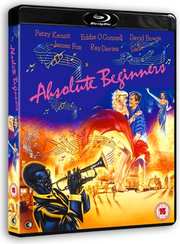
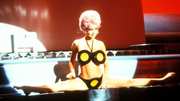
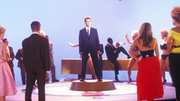





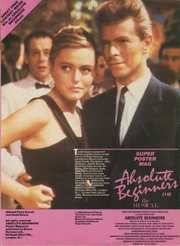
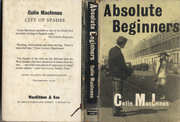
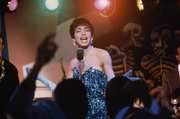
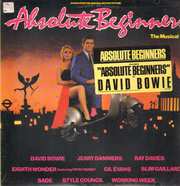
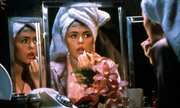














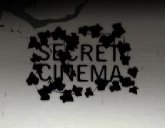

















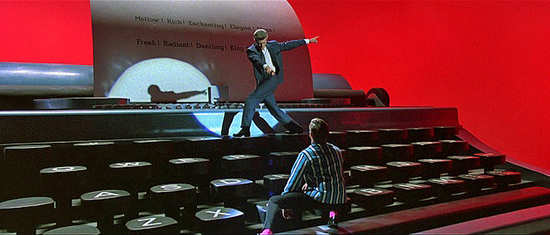







Your Opinions and Comments
Be the first to post a comment!